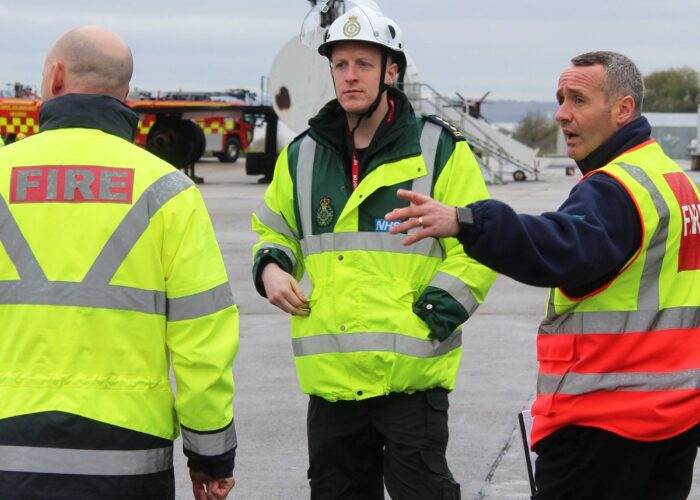
Report by Cheyenne Hansen & Paige Freshwater
A dramatic disaster was acted out at Liverpool John Lennon Airport to test their emergency strategy and response.
The role-play exercise, which takes place every two years as a legal requirement, assessed the airport’s ability to cope with a crisis on the site, alongside police, fire and ambulance services.
Airport staff, actors and members of the press staged the airport’s largest disaster drill to date, which included six ‘fatalities’ and numerous casualties.
In Wednesday’s emergency exercise, a commercial aircraft was said to have crashed on the runway following the collapse of the left hand undercarriage, causing an internal and external fire.
Robin Tudor, spokesman for JLA, told JMU Journalism: “This is really important, holding an exercise where we test all of the different aspects of dealing with an emergency.
“We are testing how we deal with friends, relatives and the passengers, who were on board that flight and who were not injured. It is also how we deal with the press and the media.
YouTube: Tom Begbie & Cieran Simpson, JMU Journalism TV
“It is looking at the communications between the emergency services and ourselves, preparing for an emergency incident and all the different aspects.”
Surviving passengers and families were escorted to a secure location, while teams of reporters attended multiple press conferences to obtain information on the disaster.

JLA Fire Service Manager, Neil Gyllenship, said: “Today’s exercise is conducted as part of a regulatory exercising plan. We have to demonstrate that the emergency plan is effective and works in its full entirety.
“We demonstrate those processes working closely with Merseyside Police, Merseyside Fire, Liverpool City Council, and all the stake holders and external agencies that would be involved in a major incident.”
After taking part in the experience as a member of the media, John Thompson from the Liverpool Echo told JMU Journalism: “It is important that any big organisation that deals with public traffic like this tests its systems and processes. In this case, it is an emergency response to an air accident.
“It is training for their staff and we have put them through some difficult questions today. That is exactly how it would be if this were a real life incident. They gain some understanding of what an incident would be like.”

